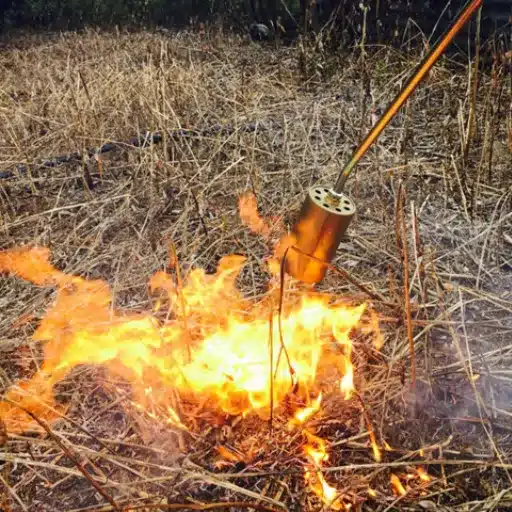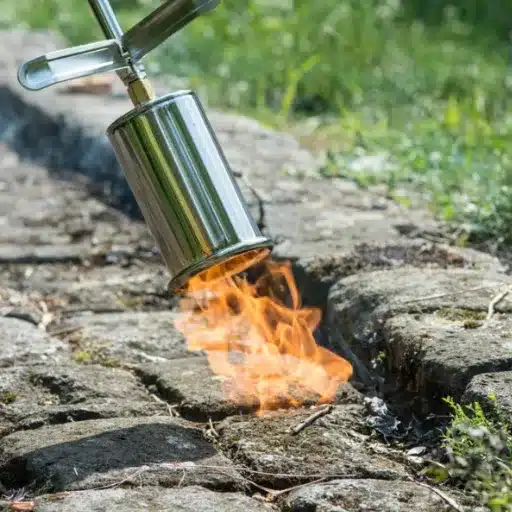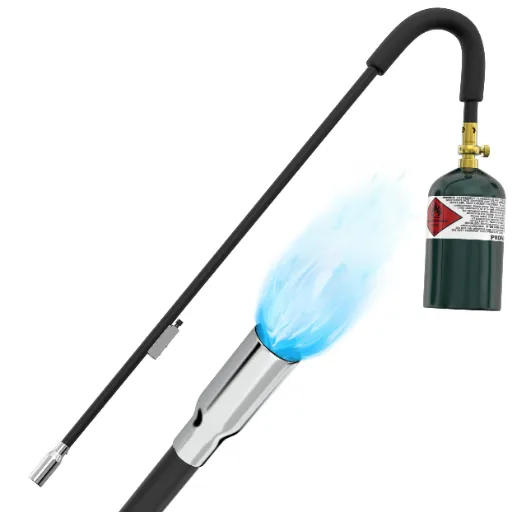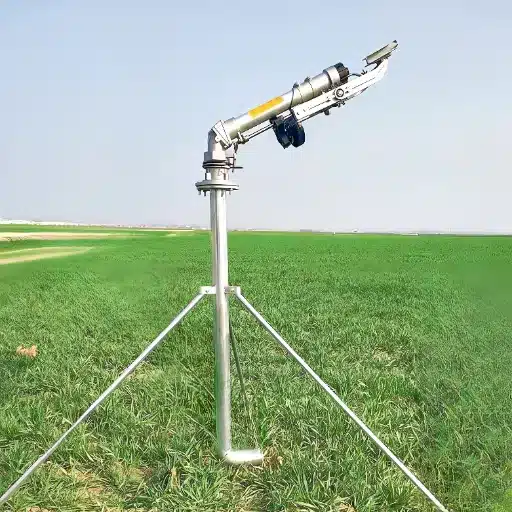An unstartable lawn mower can promptly turn a productive weekend into one of utter frustration. Whether it’s a reluctant engine or an underlying problem, an understanding of the grounds for this common phenomenon is always the first stepping stone towards getting a fix. This article will discuss the causes of trouble with lawn mower starting in common terms and will offer some practical troubleshooting tips to get you up and moving. We’ll look into fuel system problems and spark plug failures and give you solutions to these problems that could be causing your mower to stall. After this, you’ll finally be able to fix your mower while also learning how to maintain it to avoid any future inconvenience.
Understanding Starting Problems

1. Empty or Old Fuel
Check the fuel in the tank. Fuel older than 30 days can degrade and adversely affect the starting of the engine.
2. Clogged Air Filter
A dirty air filter will block airflow into the engine. Check the filter and replace it if necessary to improve performance.
3. Faulty Spark Plug
Check the spark plug for any buildup, debris, or wear. If it is dirty or damaged, clean or replace it to initiate the spark required to start the engine.
4. Battery Disconnection or Drain
For battery-powered electric starters, check the battery for proper connection and charge status.
5. Stale Oil
Old or contaminated oil can cause clogging in the system. Drain it out and fill in replace with the recommended oil for your mower.
If all these items are checked properly and in sequence, you can quickly pinpoint and fix whatever problem is preventing your mower from starting.
Common Reasons Your Lawn Mower Won’t Start
Old fuel, clogged carburetor, fouled spark plug, obstructed fuel tank vent, or a sheared flywheel key.
| Key Point | Details |
|---|---|
|
Fuel |
Old or stale fuel in the tank. |
|
Carburetor |
Clogged with dirt or debris. |
|
Spark Plug |
Fouled or damaged spark plug. |
|
Fuel Vent |
Obstructed fuel tank vent. |
|
Flywheel |
Sheared flywheel key. |
Identifying the Symptoms of Starting Issues
Recognizing the symptoms of a malfunctioning lawn mower can save time and effort in diagnosing problems. Here are common signs and their possible implications:
- Mower Won’t Turn Over
If the engine doesn’t crank at all, it could point to an issue with the battery, starter motor, or ignition switch. For electric mowers, ensure the power cord or battery is functioning correctly. According to industry statistics, battery-related problems account for nearly 35% of non-starting cases in modern electric mowers.
- Sputtering or Stalling Mid-Operation
Sputtering often indicates a dirty air filter or a clogged carburetor. Airflow is essential for proper combustion, and blockages can disrupt this balance. Data shows that routine maintenance, including checking the air filter, reduces these issues by up to 40%.
- Pull Cord Resistance in Manual Start Mowers
Manual start mowers may exhibit excessive resistance when pulling the starter cord. This could be due to engine flooding from excess fuel or internal component damage. Check the spark plug for fuel saturation, as fouled spark plugs are a common cause.
- Fuel Odor Without Engine Start
The smell of gas accompanied by failure to start might suggest fuel line leaks or improper carburetor adjustments. Approximately 22% of gas mower issues can be traced to fuel system inefficiencies, emphasizing the importance of correct fuel handling.
- Unusual Noises or Vibrations
Grinding sounds or excessive vibration during attempts to start could signify blade imbalances, loose components, or internal damage. Ignoring this could lead to further complications and costly repairs.
By understanding these symptoms and addressing the underlying causes, you can ensure smooth operation and extend the lifespan of your lawn mower. Regular maintenance and prompt response to these warning signs remain critical for keeping your equipment in peak condition.
When to Seek Professional Help
Some simple lawn-mower problems can be fixed at home, while others spell doom for the barely green thumbs among us and should be left to the professionals. Consider, for instance, an engine prone to stalling, even after the replacement of the spark plug and air filter cleaning. Such a symptom is likely to suggest another mechanical or electrical mishap. Additional situations warranting professional inspection are excessive smoke issuance by the lawn mower: blue or white smoke may mean oil leakages into the combustion chamber, while black smoke might signal combustion problems.
These noises could be the mower telling you that its crankshaft, bearing, or blade assembly is in trouble. Not heeding these noises could cause repairs costing upwards of $150 to $300, depending on the extent of the damage.
This can also signify the carburetor being blocked, the fuel line having issues, or the engine being worn. All of these would need professional tools and expertise to fix. If it is a battery-operated mower and the battery is draining or charging abnormally despite all care, diagnosis is warranted, followed by a probable battery or charger replacement.
A professional might further come to the rescue for issues with hydromower systems or advanced riding mowers with complex parts and electrical circuits. The longer these issues go unaddressed, the more the risk of damaging engines or transmissions, whereby repair would set the owner back $250 to $500 or more. Regular inspections and servicing, especially for older or heavy-use types, will keep these costs in check and give assurance for safe operation. The best solution will always be fair-priced and promptly delivered by certified professionals due to their unique tools and expertise.
Troubleshooting Steps for Your Lawn Mower

1. Check the Fuel Supply
One should always ensure fresh gasoline is in the tank. Old or contaminated fuel may prevent the lawn mower from starting or running appropriately.
2. Inspect the Spark Plug
Take out the spark plug and check whether it is dirty, worn, or damaged. Cleaning with a brush or replacing it to ensure proper ignition is necessary.
3. Examine the Air Filter
A clogged air filter will restrict airflow and cut down performance. Clean or replace it when necessary to allow smooth functioning of the engine.
4. Inspect the Blade and Deck
Check for any debris caught around the blade or on the cutting deck. Removing these obstructions will help the blade to cut smoothly and avoid undue wear.
5. Check the Oil Level
Low or dirty oil damages engine performance, so add oil or change it, whichever the case, to safeguard the engine.
6. Test the Battery (If Applicable)
In the case of electric or battery-powered mowers, ensure that the battery is charged and properly connected. Replace it if it does not hold a charge anymore.
7. Ensure Proper Cable Connections
Check all control cables, such as the throttle or safety features cables, for firm attachment and working order.
If the problem remains after trying these steps, refer to your lawn mower manual or seek help from a qualified technician for further diagnosis and repair.
Check the Spark Plug
1. Fuel Supply
The gasoline used in the lawn mower should be fresh. Old or contaminated fuel may cause the lawn mower not to start or to run improperly.
2. The Cancellation of the Spark Plug
The spark plug should be taken out and inspected for dirtiness, if worn or damaged. Cleaning with a wire brush or replacing it must be done to ensure that it ignites properly.
3. Examine the Air Filter
A clogged air filter restricts the flow of air inside and thus reduces performance. Clean or change it when necessary to ensure that the engine runs smoothly.
4. Blade and Deck Inspection
Look for dirt and debris around the blade or on the cutting deck. Removing these will let the blade cut smoothly and prevent unnecessary wear.
5. Checking Oil Level
Low and dirty oil causes poor engine performance; hence, other oil should be added or changed to protect the engine.
6. Test Battery (If Applicable)
For electric or battery-powered mowers, first check to ensure that the battery is charged and well connected. Replacement is required if it will no longer hold a charge.
7. Check Proper Cable Connection
Check all control cables, such as throttle or safety features cables, to ensure firm attachment and working order.
If after trying the above steps still the problem persists, consult your lawn mower manual or a qualified technician for further diagnosis and repair.
Inspect the Air Filter
The air filter keeps the engine of your lawn mower free from dirt, debris, and dust. Over time, air filters become clogged, inhibiting airflow to the engine and reducing engine efficiency and performance. Dirty air filters increase the consumption of fuel and also increase emissions, which may cost you the engine’s life.
To check the air filter, first review your mower’s manual to find out the location of the air filter housing. Usually, it is held in place by clips or screws and is therefore easy to access. Open it, and take the filter out to check for visible dirt or damage. If it is a foam filter, wash it with mild soap and water, then let it dry completely. After that, apply a very light coating of engine oil for the best results. Paper filters cannot be cleaned; they must be replaced if dirty or clogged. Statistics show that air filter replacement of the severely clogged kind could result in engine performance improvements of between 10% and 15% and cause a reduction in fuel consumption overall.
The air filter must always be maintained. It is advisable to check it every twenty-five hours of use or at least once every season. Should your mowing conditions involve a lot of dust or debris, then consider checking and replacing it more often to ensure the best possible performance and to also keep the engine from wear and tear.
Assess the Fuel System
Your mower’s fuel system is quite important for performance and longevity. Begin the inspection by checking the fueling tank for signs of contamination or sediment. Old or stale fuel can clog the working elements of a mower, reducing its efficiency. So, fresh gasoline is recommended, preferably used within 30 days of purchase. If ever, try to get ethanol-free fuel because high ethanol composition can absorb moisture and cause corrosion in the fuel system.
A dirty fuel filter might prevent a smooth flow of fuel to the engine, so maintaining a clean filter is indispensable. Follow instructions in your mower’s user manual on when to change the filter; however, there is a general consensus that the fuel filter should be replaced approximately every year, or more often if dirty. Dirty filters replacement will restore engine performance and protect the engine from damage caused by dirt and impurities.
Also, it’s best to examine fuel lines for any cracks or leaks to stop fuel from being lost and engine backfires from becoming a hazard. According to modern data, unattended leaks not only reduce mower efficiency but also pose a high risk of fire. Where warranted, old fuel lines should be replaced immediately to avoid further issues.
Finally, and most importantly, remember to keep the carburetor clean and to make sure it works correctly. A deposition or varnish buildup in the carburetor can impede fuel flow, thus impairing performance. Utilize a carburetor cleaner regularly or get it serviced professionally at least once every mowing season to keep your engine output at its peak and save yourself potentially expensive repairs. A well-groomed fuel system enables excellent running of the mower, which ultimately extends the life of the equipment.
Specific Components to Inspect

- Air Filter: It has to be clean and free from debris to allow proper airflow to the engine. If it is excessively dirty or damaged, it must be changed.
- Spark Plugs: They should be checked for any wear. For example, if there are black carbon deposits on the spark plugs, they might need replacement to restore proper ignition.
- Blades: Check for dullness, cracks, or chips. Replace or sharpen the blades if required to ensure clean and efficient cutting.
- Oil Level: Check if there is enough oil and if the quality is good. If the oil appears dirty or low, add fresh oil or replace it altogether.
- Drive Belt: Check the belt for cracks, fraying, or signs of wear which may hamper power transmission. Replace if required.
- Tires: Be sure to check their pressure and make sure there is no visible damage, as low tire pressure may hamper their smooth operation.
The periodic inspection of these components ensures that the lawn mower remains efficient and safe to operate.
Examining the Carburetor
In performing its utmost duties, your carburetor perfectly mixes air and fuel in the right proportion to give power to your lawn mower. Before optimally operating it, check the carburetor for dirt, debris, or buildup that could restrict airflow or fuel flow. Carry out thorough cleaning using a carburetor cleaner to ensure the removal of any residues and smooth working.
A number of signs in a lawn mower depict the carburetor’s malfunction. These are difficulty in starting, stalling, and uneven idle. Make sure that these jets and vents of the carburetor are not clogged with dirt: keep them free. Symptoms include very poor fuel mileage rate or black smoke from the exhaust.
If the engine continues to perform inconsistently, there is a possibility that the carburetor needs adjustment. This usually means adjusting the idle screw and air-fuel mixture screw to a balance. Improper adjustment can lead to inefficient engine operation, so consult your lawn mower manual for the recommended settings.
Statistical data have it that carburetors are the root cause of 40-50% of failures among small engines, due to clogging or buildup of debris On and off maintenance will go a long way in keeping the carbie good whilst at the same time buying the engine some reliability. When cleaning and tuning do not work, replacing the carburetor will restore peak performance to the mower.
Cleaning or Replacing the Fuel Filter
In maintaining or cleaning the fuel filter, the first step is to locate it between the fuel tank and the carburetor. If it is the removable type, I detach it carefully and check it for any debris or damage; if it is reusable, I clean it with a solvent. If the filter is too clogged or damaged, I replace it with a new one, making sure that the correct direction for fuel flow is observed. After installing the new filter, an additional check is made so all connections are tight enough so no leaks will develop. Keeping this process simple ensures the smooth delivery of gasoline and helps with engine performance.
Evaluating the Oil Level
Measuring oil levels is a very basic yet crucial step to ensure engine performance and proper lubrication. To check for the oil level, one must park the vehicle on level ground with the engine switched off for at least 10 minutes. Such a pause allows the oil to settle in the pan, thus giving an exact reading.
The dipstick is found towards the engine block and may often be identified by its bright color. Pull the dipstick out, wipe it clean with a lint-free cloth, and insert it fully back into its tube. Pull it out again and check the oil level between the markings on the dipstick, usually designated as “MIN” and “MAX.” The oil level ideally should be somewhere in between these two markings, inclined more towards maximum for adequate lubrication.
In addition to checking the level, examining the condition of the oil is a must. New oil will be amber and translucent, while the darkened or cloudy one might mean that the oil needs to be changed. Keep track of any changes in the oil level as a disappearing or low downfall in oil levels over time may point toward leakage or excessive consumption, rendering immediate attention.
Preventative Measures for Future Issues

Regularly maintain the lawn mower by using fresh fuel, cleaning the carburetor, checking the spark plug, and storing it properly.
| Key Point | Details |
|---|---|
|
Fuel |
Use fresh, high-quality fuel to avoid engine issues. |
|
Carburetor |
Clean regularly to prevent dirt and debris buildup. |
|
Spark Plug |
Inspect and replace if fouled or damaged. |
|
Storage |
Store in a dry, clean area to avoid moisture damage. |
Regular Maintenance Tips
Proper maintenance ensures a longer lifespan and optimal performance for your lawn mower. Below are detailed tips to keep your mower in excellent condition:
- Replace Air Filters
Dirty air filters can restrict airflow, causing the engine to work harder and decreasing efficiency. Replace the air filter every 25 hours of operation or at least once per mowing season for ideal performance.
- Change the Oil
Regular oil changes maintain engine lubrication and prevent wear. Aim to change your mower’s oil after every 50 hours of use or annually, whichever comes first. Always use oil recommended by the manufacturer.
- Sharpen the Blades
Dull blades tear grass instead of cutting it cleanly, leading to a brownish lawn and increased strain on the mower. Sharpen the blades every 20-25 hours of usage or more frequently if mowing over rough surfaces.
- Check Tire Pressure
Uneven tire pressure can affect the mower’s performance and cause an uneven cut. Inspect the pressure monthly and inflate the tires to the manufacturer’s specifications as needed.
- Inspect Belts and Cables
Over time, belts and cables can wear out or loosen. Examine them for signs of cracks, frays, or slackness and replace or adjust as necessary to prevent operational issues.
- Remove Grass Clippings and Debris
Build-up under the mower deck can cause rusting and blockages. After each mowing session, clean out the deck using a scraper or hose to keep it free of debris.
- Use High-Quality Fuel
Ethanol-free or low-ethanol fuel prevents moisture accumulation and extends engine life. Avoid using fuel older than 30 days, as stale gas can lead to carburetor issues.
- Perform Annual Tune-Ups
Comprehensive annual maintenance, including spark plug replacements and thorough inspections, ensures your mower operates efficiently. Use a tune-up kit if available for your model.
- Store Properly
During off-seasons, store the lawn mower in a clean, dry environment. Add a fuel stabilizer to the tank before storage to prevent deterioration, and ensure all parts are clean and moisture-free.
Storing Your Lawn Mower Properly
In order to store my lawn mower correctly, I take particular care to clean it thoroughly, making sure all of the grass clippings and other bits and pieces are gone. I either drain the fuel or add a stabilizer for it, thus preventing the onset of any engine troubles during storage. I check the oil and maybe change it, plus I give the blades a look to see if they’re damaged. Afterward, I store the mower in a dry, covered area to keep it away from the elements until it will be ready for use when the mowing season begins again.
Using Fresh Fuel
Everyone knows that fresh fuel is a must in order to keep lawn mowers performing well and lasting longer. Gasoline types lose their combustibility on evaporation and oxidation, which could spell miseries for the engine-start weird behaviors or craziness in operation. Industry sources claim that gasoline may start breaking down within about 30 days, with degradation faster in case of bad storage or exposure to air. So, to be safe, make it a rule to use only fresh fuel within that time period, and take into consideration the use of stabilizers that can keep gasoline viable for longer. Definitely, go for ethanol-free gasoline or even gasoline for small engines since ethanol tends to attract moisture that can cause corrosion inside the engine. Fresh and good-quality fuel will take your mowing experience far, while dirty fuel is a recipe for expensive repairs down the road.
Reference Sources
-
Colorado State University – Lawn Mower Maintenance
https://planttalk.colostate.edu/topics/miscellaneous/2015-lawn-mower-maintenance/ -
Federal Way Government – Troubleshooting Murray Mowers
https://www.federalwaywa.gov/sites/default/files/webform/troubleshooting-mowers-with-driver.pdf
Frequently Asked Questions (FAQs)
What are the common reasons your lawn mower won’t start?
There are several reasons your lawn mower might not start. One of the most common issues includes a dirty or faulty spark plug, which may require you to remove the spark plug and inspect it. Other culprits could be old gas in the tank, a clogged fuel filter, or issues with the battery terminals. Ensuring that your mower has fresh gas and that all components are in good working condition is essential for starting the mower.
How do I troubleshoot a lawn mower that won’t start?
To troubleshoot a lawn mower that won’t start, begin by checking the fuel tank for fresh gas. If the mower has been sitting for an extended period, drain the old fuel and replace it with new fuel. Next, inspect the spark plug and its wire for any damage or dirt. You may need to clean or replace the spark plug. Additionally, check the air filter and battery terminals to ensure they are clean and functioning properly.
What should I check if my mower still won’t start?
If your mower still won’t start after checking the fuel and spark plug, inspect the carburetor for clogs or dirt. A clogged carburetor can prevent the engine from starting. You might also want to check the oil level and ensure that the mower is in proper condition for operation. Cleaning or replacing the air filter might also help in resolving starting problems.
How can I keep my mower running smoothly?
To keep your mower running smoothly, perform regular lawn mower maintenance. This includes checking and cleaning the air filter, spark plug, and fuel filter. Ensure that the fuel tank has fresh gas and that you drain the old fuel regularly if the mower has been sitting. Regular inspections and maintenance can prevent common issues that might lead to a mower that won’t start.
When should I consider replacing my spark plug?
You should consider replacing your spark plug if you notice signs of wear, such as corrosion or dirt buildup. If your mower engine won’t start even after checking the plug wire, it’s likely that you need a new spark plug. Regularly inspecting and replacing the spark plug can help prevent starting issues and ensure your mower continues to run efficiently.
What does it mean if my mower won’t stay running?
If your mower won’t stay running, it could indicate a problem with the carburetor or fuel system. A clogged fuel filter or an air leak can disrupt the fuel flow, causing the engine to stall. Check the fuel tank for fresh gas and ensure that there are no clogs in the fuel line or carburetor. Additionally, inspect the spark plug to ensure it is functioning properly.
How does old fuel affect my lawn mower?
Old fuel can significantly affect your lawn mower’s performance. It can lead to starting problems as it may become stale and lose its combustibility. If your mower has been sitting for a while, it’s important to drain the old fuel and replace it with fresh gas to avoid clogging the fuel system and ensure the mower starts smoothly.
What should I do if my riding mower won’t start?
If your riding mower won’t start, first check the battery terminals for corrosion or a weak charge. Inspect the spark plug and ensure you have fresh gas in the tank. If the mower still won’t start, check the fuel filter for clogs and the carburetor for any issues that may prevent the engine from starting. Regular maintenance can help prevent these issues from arising.









